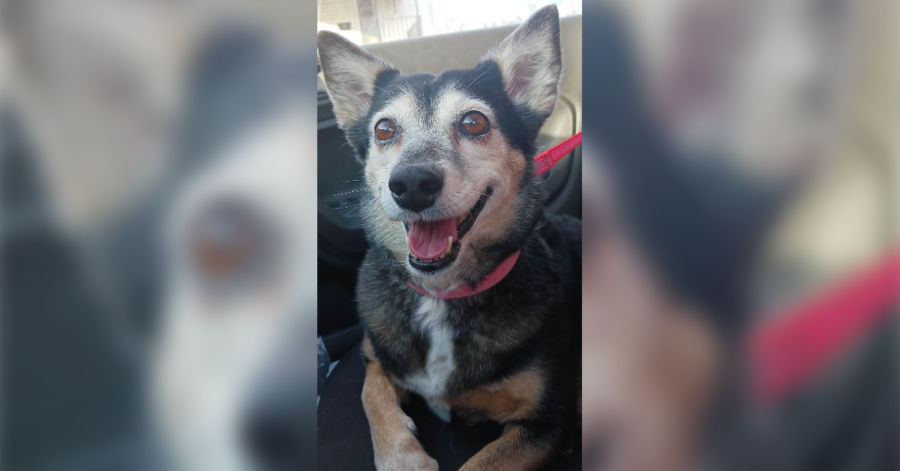While some students opted to play basketball or cornhole, some special four-legged friends came to campus on Thursday, April 27, as part of the West Campus Therapy Dog Event. Mental health resources were also available as students were encouraged to explore ways to de-stress as the Spring ’23 semester wraps up and finals week approaches. As simple as it is to pet an animal – and science has proven that such contact can relieve stress – there’s more to know about the connotation of the term Service Animal.
The use of dogs being put to work alongside their human companions is not new, though their roles have changed. Throughout history, no matter their differences, human civilizations have used dogs to guard homes, assist with hunting and even pull sleds with valuable supplies. Some breeds are valued for the tasks which their breeds have been bred to do, such as the komondor and its specialty role of guarding livestock. Alternatively, corgis gained popularity in the last few decades following the late Queen Elizabeth’s preference towards the Pembroke Welsh corgi breed. No matter the breed, size, temperament, or personality, many canines can be trained to perform tasks to benefit their human companions.
During the Civil War, dogs were used for practical reasons, often as either guards or messengers for both Confederate and Union troops. Following World War I, German doctor Gerhard Stalling opened the world’s first guide dog school to aid survivors who had been permanently blinded by mustard gas. After an article was published in the Saturday Evening Post, an American man named Morris Frank reached out to its author, another American who had visited such training centers overseas. Her name was Dorothy Eustis. Eustis ran a German Shepherd training center in Switzerland at the time and invited Frank to visit. Morris and Eustis would later go on to found The Seeing Eye, the first American guide dog school, which presently holds the record as the oldest in the world to still be in operation. Regardless, the term ‘service dog’ wouldn’t be coined until 1975 with Dr. Bonita “Bonnie” Bergin, who hoped to find a way to give individuals with physical disabilities a chance at having more independence.
Dr. Bergin first worked with a quadriplegic woman, Kerry Knaus, and the first service dog, Abdul, then went on to create the Canine Companions for Independence (CCI). This was the first organization of its kind to both train service dogs with specialized tasks and place them with people. Dr. Bergin also went on to help define the difference between “service” and “assistance” dogs, leaving a legacy in both her work with the Americans with Disabilities Act and in the US Justice Department. Dr. Bergin also went on to found an educational institution, the Assistance Dog Institute, which is dedicated to research, development, and education of methodologies regarding how best dogs can learn or adapt to tasks to help their human companions.
While dogs can be trained to do specific tasks, there are extreme differences between service dogs, working dogs, therapy dogs, and emotional support dogs. While service dogs are trained to accomplish specific tasks, such as alerting deaf people to sounds, some may detect seizures or even be trained to bring medication and a phone if a medical crisis occurs. Alternatively, working dogs are trained to perform tasks such as detecting dangerous materials or locating people, such as a missing child. Therefore, they are under few restrictions, given that their tasks take place under specific conditions. Due to such specialized responsibilities, there are no specifications regarding their rights under the current ADA legislation.
Therapy dogs also are not granted rights under the ADA, though due to their training, they often are found in clinical settings such as hospitals, schools, or nursing homes. Therapy dogs are trained to interact with different people while being unfazed by new scents, sounds, or movements while being accustomed to being touched by different people. Therapy dogs are defined as comfort animals; however, they do not share rights to public spaces. These animals are also insured and licensed by the individual nonprofit which offers the service.
Emotional Support Animals have recently come under fire due to numerous situations nationwide where an individual will claim their animal is an Emotional Support Animal. Emotional Support Animals may be granted limited privileges through a letter of diagnosis from a psychiatrist or doctor to their owner. These letters often permit, under the Fair Housing Act, that the animal stays with its owner in areas that typically would not allow pets. These letters do not grant the owner of the Emotional Support Animal entrance to public spaces such as restaurants or stores. Emotional Support Animals, however, do offer benefits to their owners even if proper training has not been done. Often individuals who have emotional or psychological disorders, such as depression, panic attacks, or PTSD, will have their pets to be considered Emotional Support Animals.
As an owner of an Emotional Support Animal myself, due to my service-connected disability of PTSD, I am grateful that my dog, Lady, can accompany my son and me as we learn Springfield. However, as a responsible owner, I recognize, for Lady’s safety and my own, it is best I don’t try and misidentify her so she can join me in public places. She’s older now and less patient with people and other animals at times, sort of like me. I’m grateful for her companionship, and even if not officially trained on tasks, Lady makes my life and mental health easier. She’s woken me up from night terrors and alerted previously to an individual outside our former residence. I also can’t ignore how she’s made cleaning up after dropping a piece of food much less of a chore. Dogs are companion animals, domesticated over thousands of years alongside humans. As much as we’ve changed their looks, temperament, and job roles throughout millennia, they have also changed our development and what it means to be human.
Request a Dog – Bergin College of Canine Studies (berginu.edu)
Where Did Service Dogs Come From? A Brief History (newlifek9s.org)
Service, Working, Therapy, Emotional Support Dogs: Which Is Which? (akc.org)

















